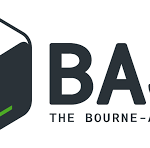Introduction
The Internet of Things no longer belongs in the future. It is real, it is here, and now, and it’s setting a pace in how we live our lives, work, and interact with our surroundings. From smart homes to connected cars, IoT creates a network of devices that communicate among each other in such a way so as to provide ease of use and efficiency. This blog explains what IoT is, how it works, its applications in various industries, and how it could potentially impact our lives.
- What is IoT?
The Internet of Things (IoT) is a network of physical devices—from ordinary appliances at home to industrial machinery—that go online to collect, share, and act on data. These devices, typically equipped with sensors, software, and other technologies, interact with other devices and centralized systems for smooth information exchange and automation.
- How does IoT work?
IoT works through a system of interlinked devices, data processing, and communication protocols. The following is the basic illustration of how IoT works:
Sensors and Devices: IoT devices are embedded with sensors for data collection, like temperature reading or human motion detection.
Connectivity: This information gets transmitted to the cloud or a local server through protocols such as Wi-Fi, Bluetooth, or cellular networks.
Information Processing: The information, on reaching the cloud or server, is then processed and analyzed to extract meaningful insights or produce some actions.
User Interface: The results or the actions can be accessed by the user through an interface in the form of a mobile application or web dashboard, which allows users to monitor and control their devices remotely.
- Applications of IoT
IoT has a wide range of applications across various industries, all offering unique benefits:
Smart Homes: Almost all of the current home devices are controlled and automated by IoT, from thermostats to light and security systems, hence integrating convenience, energy efficiency, and security into one roof.
Healthcare: IoT in healthcare means wearable devices to track vital signs, smart medical equipment, and remote patient monitoring systems for improved care through real-time tracing of a patient’s health.
Manufacturing: By applying this technology to the industrial sector, IoT makes possible predictive maintenance and real-time monitoring of production lines. Moreover, it improves supply chain management for more efficiency and reduces downtime.
Agriculture: IoT is revolutionizing agriculture with smart farming techniques, inclusive of automated irrigation systems, soil sensors, and crop monitoring drones, thus enabling farmers to monitor the situation and have optimum utilization of resources to reap better yields.
Transportation: connected vehicles, smart traffic management, and fleet monitoring systems form part of the role of IoT in rendering safe, efficient, and cost-effective operations within transportation.
Retail: IoT in retail includes smart shelves that track the inventory, personalized marketing through data analytics, and automated checkout systems for creating great experiences for the customers.
- Benefits of IoT
Their extended adoption of IoT offers numerous benefits to the domains of operation:
Higher Efficiency: Automation and real-time data monitoring optimize operations and resource management, reducing wastage and increasing productivity.
Increased Convenience: The connected devices provide better control and flexibility to the user for managing home appliances or industrial machines with much ease.
Cost Savings: Predictive maintenance and energy management systems lower operational costs for businesses, while smart home devices lower utility bills for consumers.
Decision-Making: Insights from IoT data are useful for decision-making at different levels, from business strategy and health perspectives to a change in personal lifestyle.
Security: Different applications of IoT, such as smart security systems, connected vehicles, and industrial safety monitoring, all add up to safety—both of people and businesses.
- Challenges and Considerations
While several advantages are associated with the IoT, it also comes with the following challenges that must be taken care of:
Security: With the increasing number of devices connecting to the internet, the possibility of a cyber attack or data breach also surges. Ensuring robust security measures for the protection of sensitive information is paramount.
Privacy: The huge data that IoT devices gather from their users brings issues regarding users’ privacy. Companies have to implement transparent data handling practices in order to perform in a privacy regime.
Interoperability: The huge count of devices from different manufacturers makes it quite hard to be interoperable and assures smooth device communication.
Infrastructure Requirements: IoT requires strong network infrastructure, which includes high-speed internet and reliable connectivity, to which not everyone has access, especially in some parts of the world.
- IoT Future
Looking into the future of IoT—bright with technological advancements fuelling innovation and new applications—some important trends that will see are:
5G Connectivity: Development and deployment of 5G networks are expected to make a dramatic increase in IoT, enabling fast data transfer rates and low latency that facilitate a wide array of real-time applications.
AI and Machine Learning Integration: Pairing IoT with AI and machine learning allows for smarter, more autonomous systems that can analyze data, make decisions, and adapt to changing conditions without human intervention.
Edge computing: IoT devices will start relying more and more on edge computing to reduce latency and improve processing efficiency, which means processing data closer to the source and not in some centralized cloud.
Sustainable IoT: With growing concerns for the environment, there will be a focus on developing IoT solutions contributing toward sustainability, such as energy-efficient devices and smart grids.
Conclusion
IoT is reshaping the world we live in, offering unparalleled opportunities for innovation and growth. Further on in time, this changing IoT will spell its impact across every industry, hence raising efficiency, convenience, and new possibilities. Having said that, it’s most vital that we come to grips with these challenges of security, privacy, and infrastructure as we embrace this connected future, so as to provide a safe and sustainable IoT ecosystem.



